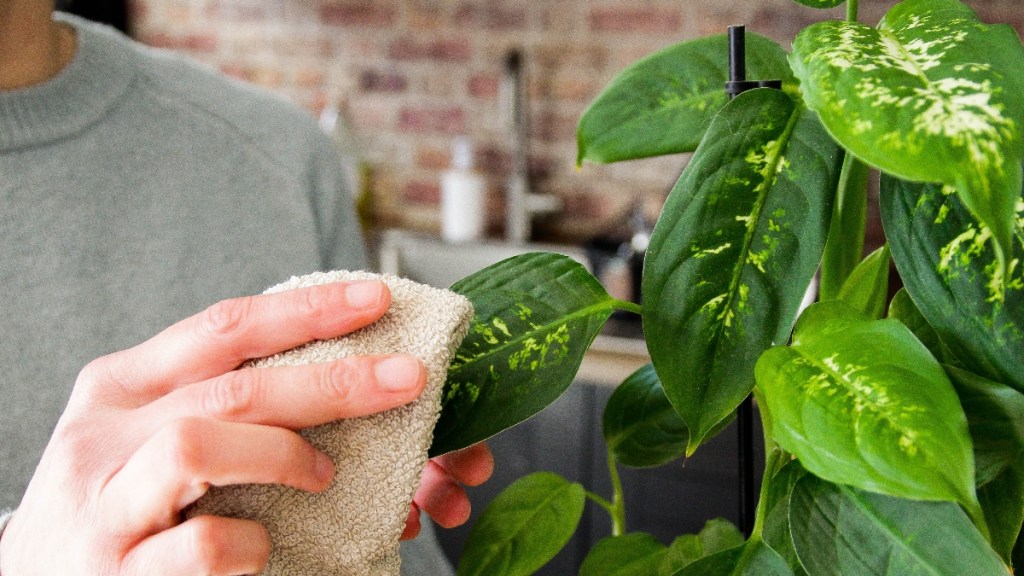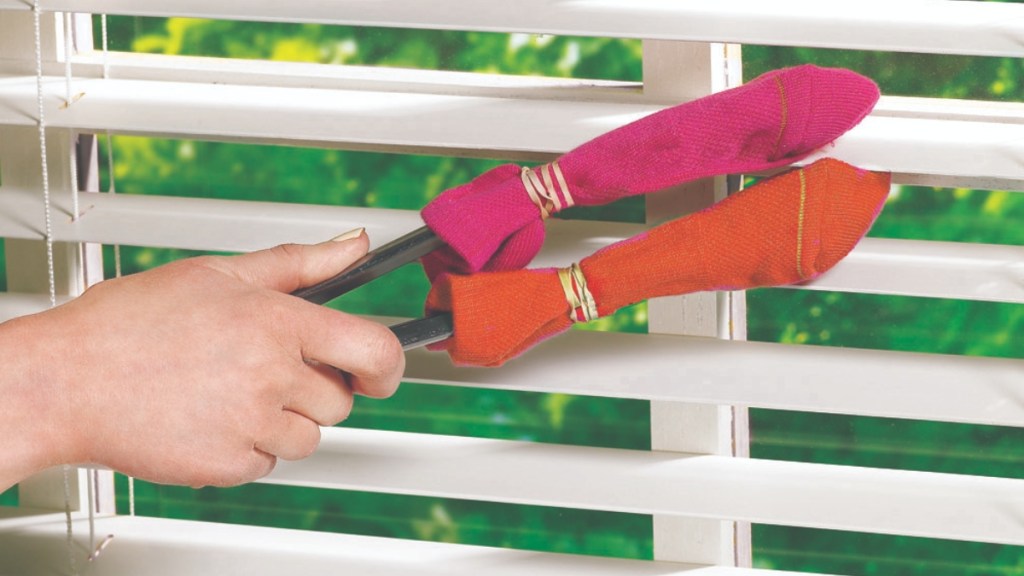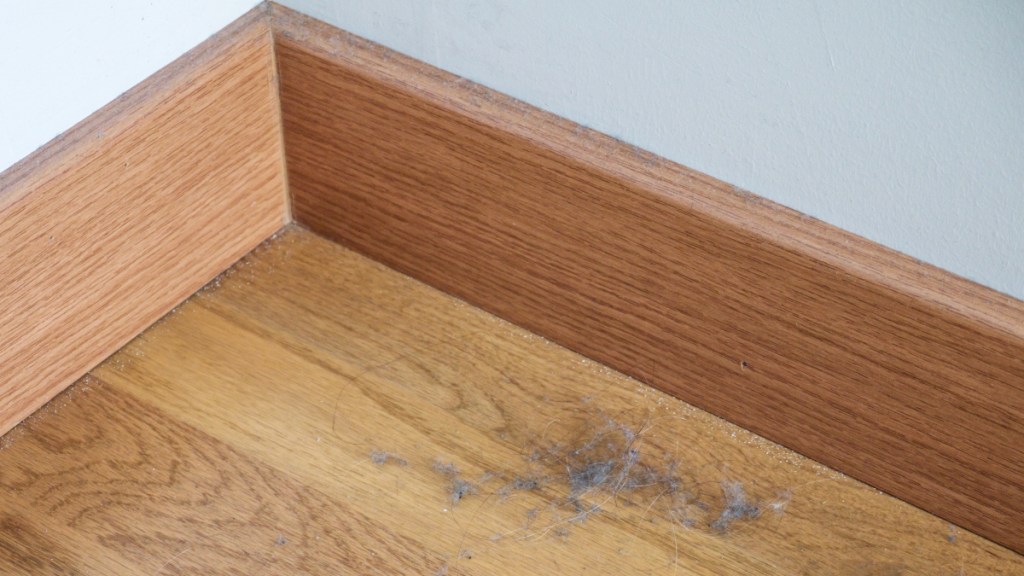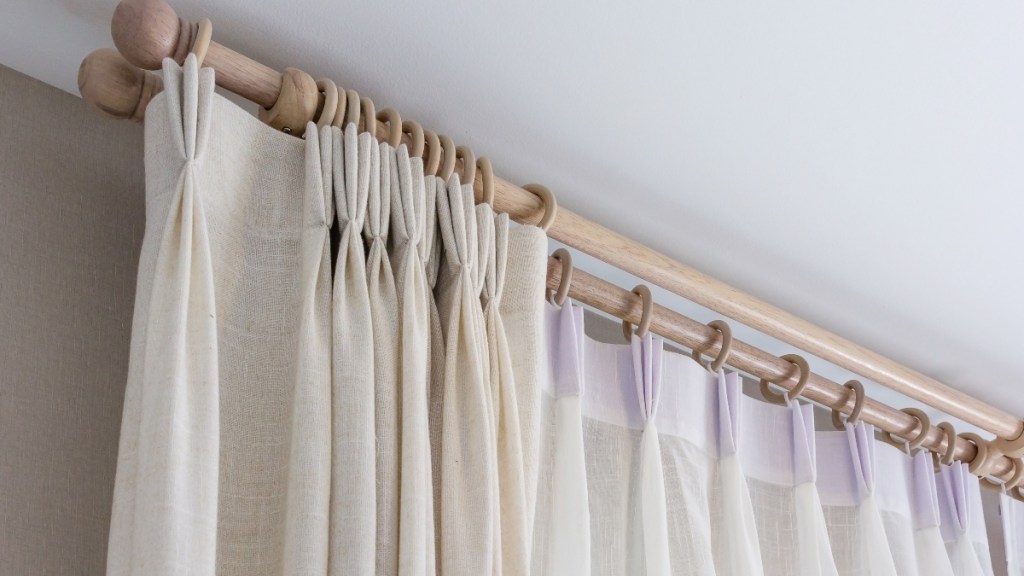Why Is My House So Dusty? Cleaning Pros Share The Answers + Tricks To Eliminate It
Spoiler alert: you can clean dust from your lampshade with a slice of bread!

Dust is one of the most common nuisances in any home. From electronic screens to window blinds, it always seems to build up no matter how much you clean. But there are ways to outsmart it! Below, cleaning pros answer the question “why is my house so dusty” and offer clever tricks to reverse the problem.
Why is my house so dusty?
Even with regular cleaning, you may be asking yourself, “why is my house so dusty?” The answer, according to cleaning pros, could be due to a number of factors.
Says Ronnie Kendrick of CompanyClean in Highlands Ranch, Colorado, “The dust can come from dirt, pollen, pollution in the area and even insects. Then there’s inside sources such as your skin cells and pet dander.”
Air quality is one possible factor, especially during seasons when your windows are open to let in a breeze. “If you live in places with bad air quality (like Dallas or pretty much any major city in the U.S.) and you have open windows, dust is going to come in all the time,” says Enereyda Morales, a cleaner for Dallas Maids.
Another common answer to why is my house so dusty? Furry household members, especially long-haired cats and dogs. “They release sweat, dandruff, bacteria, dander and all of that falls into the ‘dust’ category,” adds Morales. If your pet goes outside, they can also track in dirt when they return to the house.
Finally, if your home is damp you may find that you’re dealing with a surprising amount of dust in your home. “Excessive moisture is another factor because it helps dust mites to grow,” explains Morales. “So even if it’s not necessarily physical dust, some of it still travels through water particles in the air, and you’re still getting the cons of dust mites (allergies, possible sickness).” (Click through to see why banishing dust is one of the best COPD self-care strategies.)
How to prevent dust from building up
All of the causes for a dusty home mentioned above can be tackled with a few simple tweaks. When it comes to air quality, consider investing in dust and pollen-proof window screens. The fine mesh blocks out particles that could otherwise enter your home. (Note: You do need to clean them more regularly).
For pets, a little extra TLC can go a long way! “Brushing them and making sure you give them a bath and groom them regularly (according to the type of pet, of course) helps you prevent dust from being everywhere, combined with a robot vacuum to keep things decently clean and tidy — especially if you have more than one pet,” suggest Morales. (Need to give your cat a bath? Click here to learn how to make it a breeze!)
Air purifiers and dehumidifiers are also great items to have in your home. Dehumidifers will eliminate that extra moisture in the air that could otherwise lead to mold growth or dust mites.
The best ways to tackle dust
In order to stop asking yourself, why is my house so dusty, our easy tricks can help you tackle some of the most commonly dusty spots. A tip to make the process as efficient as possible: “When you’re cleaning your home, start from top to bottom to shake that dust loose where it’s easy to vacuum or wipe with a cloth,” advises Kendrick. “If you’re seeing excess dust, check your vacuum filter because it might be clogged and you’re only moving the dirt around.”
From houseplants

Houseplants such as peace lily, bamboo palm and chrysanthemum are such efficient air purifiers, NASA recommends them to help clean the air in your home! Yet the plants themselves can get dusty, which blocks their filtering powers. To the rescue: “Apply a little bit of mineral oil to the leaves using a paper towel,” says cleaning expert Lily Cameron of Fantastic Services. The oil creates a shield on the leaves, so they can still filter the air but the dust won’t settle on them!
From lampshades
Cleaning lampshades with the vacuum requires taking the shade off so the lamp doesn’t topple, then putting it back on again. The easier way: Just head to the kitchen and grab a slice of white bread, then gently dab the bread on the shade — not only will it pick up grime, it’ll also absorb dust-attracting grease that our hands leave behind when we reach for the on-off switch.
From window screens
If the screens in your windows are gunked up with winter dirt and debris, reach for a lint roller, says Marco Bizzley, design and cleaning consultant for House Grail. “Simply run it over your screens — the sticky surface will lift dirt and debris right off. And if you need to reach screens on high-up windows, slide the lint roller on to an expandable paint roller!”
From furniture
To banish dust from wood tables, desks and chairs, first give them a quick wipe with a damp cloth, says Reta Engelking of Cleaning Maid Affordable LLC. Then spray them with a mix of 1 cup of water, ¼ cup of white vinegar and 2 Tbs. of olive oil. The vinegar and olive oil clean and moisturize the wood, creating a barrier that repels dust.
From blinds

Wouldn’t it be great to clean blinds and repel future dust in one fell swoop? The next time you’re wondering why is my house so dusty, you can do just that: Simply use rubber bands to secure two dryer sheets or orphan socks around each end of a pair of kitchen tongs. Then clamp the tongs over each slat and slide across. The sheets will lift dust in the hard-to-reach spaces, and the residue of the fabric softener will create a fresh-smelling, dust-busting “force field.”
From fans
Ugh! Every time you reach up to clean your ceiling fan, you’re hit with a cascading puff of dust. To the rescue: Spray the inside of a pillowcase with of a mixture of one cup of water, ¼ cup of white vinegar and two teaspoons of olive oil. Pull the case over each individual fan blade, recommends Lauren Bowen, director at Two Maids & A Mop. “The vinegar lifts dirt and grime, while the olive oil leaves a dust-repelling seal. When you slide off the pillowcase, all the dust that has built up over time will be trapped.”
See how well a pillowcase works to collect dust in the video below:
From electronic screens
Electronics like flatscreens and laptops can be dust magnets because their electric charge attracts airborne gunk. The solution: unused coffee filters. They’re soft and gentle enough to use on TV screens and all your other devices, and their porous material makes them great dust absorbers — just wipe and you’re done! (Click through for more uses for coffee filters).
From baseboards

Baseboards attract dust because air circulates more easily around them, thanks to drafts and heating. “Just wipe them down with a cloth dampened with a solution made of one part lemon juice to two parts warm water,” suggests Cameron. “The acid in lemon forms a barrier that prevents dust from settling and also blocks static electricity, so dust will be repelled in the first place!”
From curtains

No need to lug out the vacuum to remove dust from your curtains. Just grab a clean paint roller, wrap a piece of duct or packing tape around the barrel with the sticky side out, and roll it up and down over the curtains. The tool works like a giant lint roller to pick up dust. To give curtains an extra spring-clean scent, just whip up a natural fabric freshener: In a spray bottle, mix one part water, one part vodka and a few drops of your favorite essential oil and spritz away!
From glass
For crystal-clear windows and mirrors without the toxic scent of commercial cleaners, combine 1 cup of rubbing alcohol, 1 cup of water and 1 Tbs. of vinegar in a spray bottle. Spritz the glass and wipe with a rag. Acetic acid in vinegar cuts through dust and dirt, while the alcohol ensures the spray evaporates quickly, leaving no streaks.













